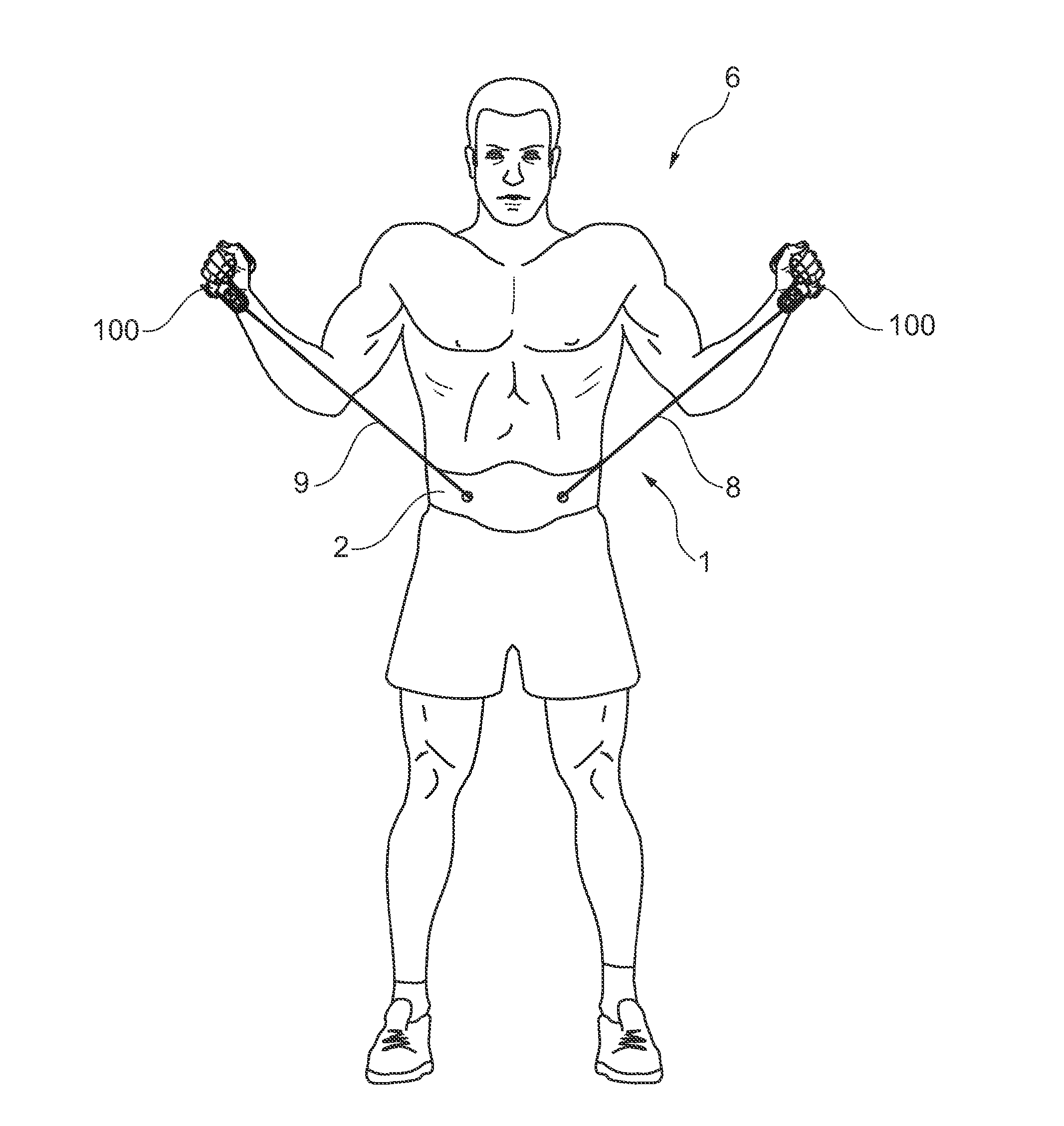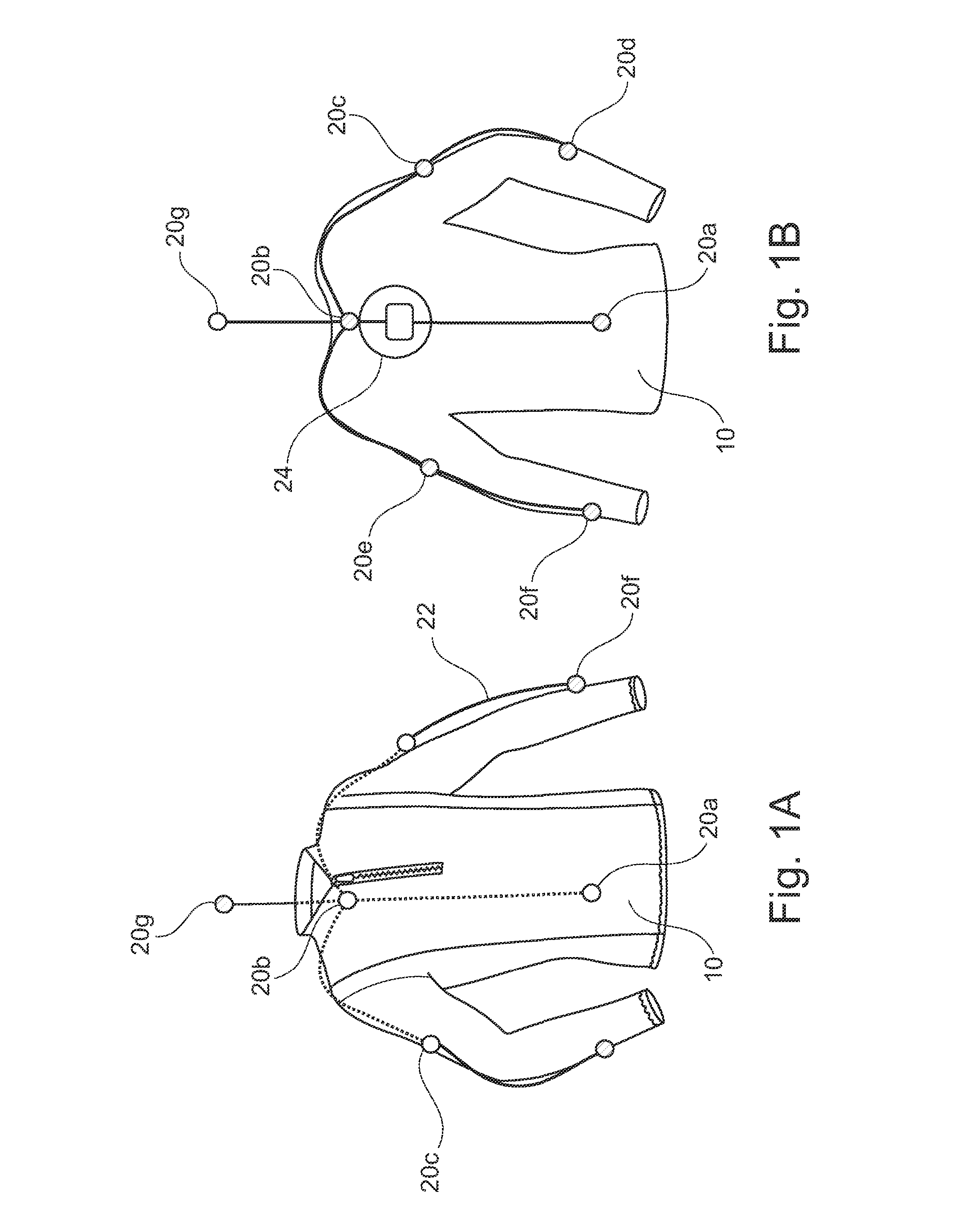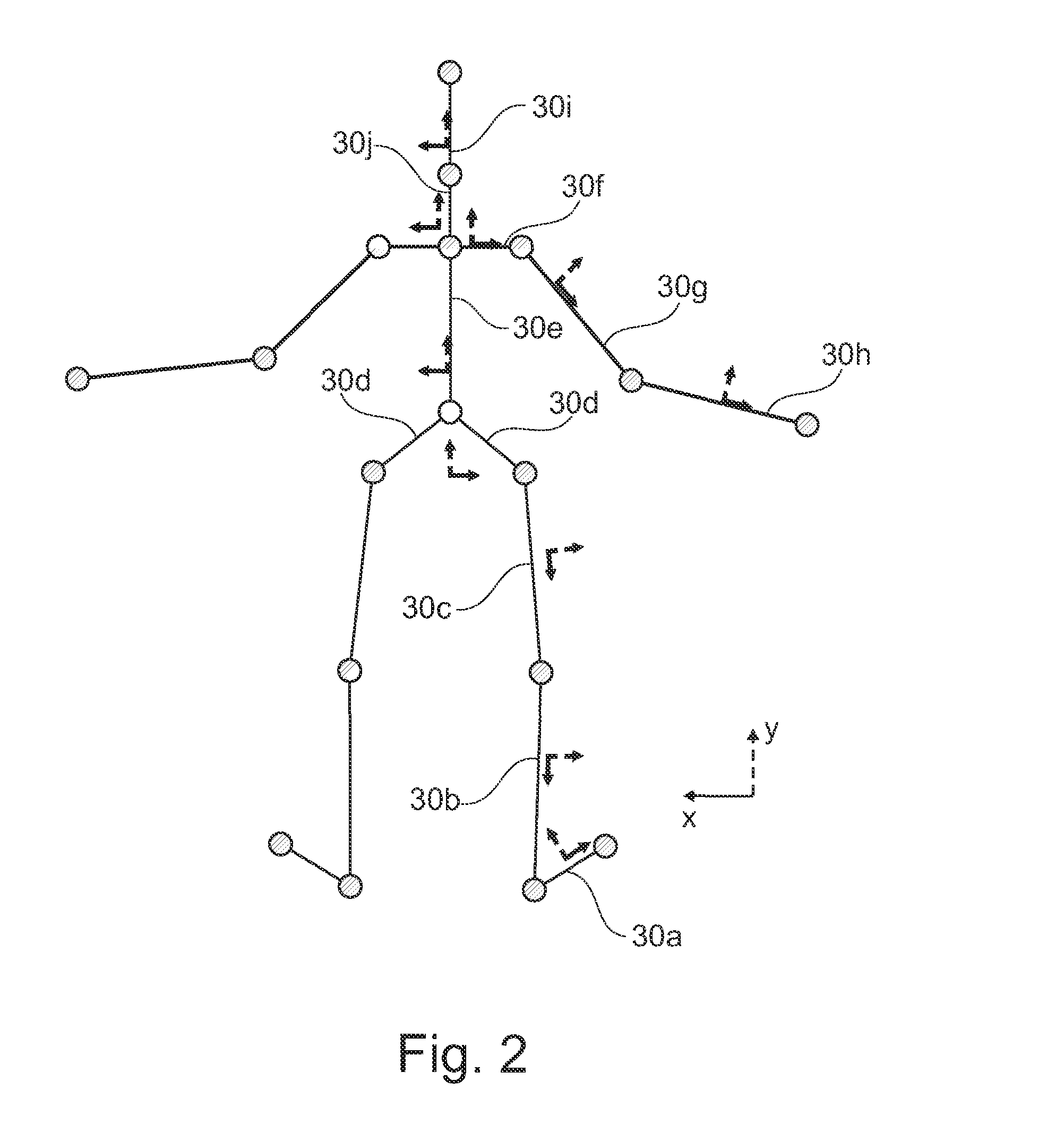Method and apparatus for measuring expended energy
a technology of expended energy and measurement method, which is applied in the direction of sports equipment, sensors, diagnostics, etc., can solve the problems of inability to use the energy source for biochemical reactions at the skeletal muscle, the risk of developing t2d, and the excess amount of glucose circulating the body, etc., to achieve convenient and accurate measurement, increase the energy required, and low cost
- Summary
- Abstract
- Description
- Claims
- Application Information
AI Technical Summary
Benefits of technology
Problems solved by technology
Method used
Image
Examples
Embodiment Construction
[0095]The present invention seeks to provide a method and apparatus for calculating the total energy expenditure of a moving body, such as the human body. In particular, the present invention models the moving body as a kinetic chain of connected segments that are movable relative to one another. The mechanical work of such a movable body is equal to the summation of the internal and external work done. The latter is dependent on the movement of the centre of mass (COM) relative to the environment (i.e. a reference frame), while the former is related to the movements of the segments relative to the COM and one another. The total kinetic energy of such a multi-link system can therefore be described as the sum of:[0096]a) the kinetic energy of the segments arising from their change of speed with respect to the overall COM (internal work done); and[0097]b) the kinetic energy of the overall COM with respect to the environment (external work done).
[0098]External work is readily and easil...
PUM
 Login to View More
Login to View More Abstract
Description
Claims
Application Information
 Login to View More
Login to View More - R&D
- Intellectual Property
- Life Sciences
- Materials
- Tech Scout
- Unparalleled Data Quality
- Higher Quality Content
- 60% Fewer Hallucinations
Browse by: Latest US Patents, China's latest patents, Technical Efficacy Thesaurus, Application Domain, Technology Topic, Popular Technical Reports.
© 2025 PatSnap. All rights reserved.Legal|Privacy policy|Modern Slavery Act Transparency Statement|Sitemap|About US| Contact US: help@patsnap.com



